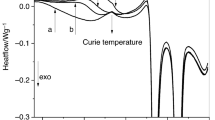We report the results of extensive thermal magnetoresistance measurements on single-crystal and polycrystalline specimens of potassium having residual resistance ratios (RRR) ranging from 1100 to 5300. Measurements were made between 2 and 9 K for magnetic fields up to 1.8 T. The observed thermal magnetoresistance cannot be understood on the basis of either semiclassical theories or from the electrical magnetoresistance and the Wiedemann-Franz law. We do, however, observe a number of interesting relationships between the thermal and electrical magnetoresistances, many of which are not immediately obvious when comparing direct experimental observations. The thermal magnetoresistance W(T, H) is given reasonably well by W(T, H)T = W(T, 0)T + AH + BH 2, where both A and B are temperature-dependent coefficients. Our results show that A = A 0 + A 1 T 3, while B(T) cannot be expressed as any simple power law. A0 is quite dependent upon the RRR, while a 1 is independent of the RRR. We find two very interesting relationships between corresponding coefficients in the electrical and thermal magneto-resistance: (i) the Wiedmann-Franz law relates A 0 to the Kohler slope of the electrical magnetoresistance and (ii) the temperature-dependent portions of the electrical and thermal Kohler slopes are both proportional to the electron-phonon scattering contribution to the corresponding zero-field resistance. The latter provides evidence that inelastic scattering is very important in determining the temperature-dependent linear magnetoresistances. Part, but by no means all, of the quadratic thermal resistance is accounted for by lattice thermal conduction. We have not been successful in generating another mechanism that gives a quadratic field dependence. After subtracting the lattice contribution, the Lorenz ratio is still strongly field dependent, decreasing with increasing field. Based on these observations and additional arguments, our general conclusion is that at least a portion of the anomalous electrical and thermal magneto-resistances is due to intrinsic causes and not inhomogeneities or other macroscopic defects.
Similar content being viewed by others
References
H. Taub, R. L. Schmidt, B. W. Maxfield, and R. Bowers, Phys. Rev. B 4, 1134 (1971).
I. M. Lifshitz, M. Ya. Azbel and M. I. Kaganov, Zh. Eksp. Teor. Fiz. 30, 200 (1955); Sov. Phys.—JETP 3, 143 (1956).
D. Shoenberg and P. J. Stiles, Proc. Roy. Soc. A 281, 62 (1964).
M. Ya. Azbel, M. I. Kaganov, and I. M. Lifshitz, Zh. Eksp. Teor. Fiz. 31, 63 (1956); Sov. Phys.—JETP 4, 41 (1957).
A. M. Simpson, J. Phys. F 3, 1471 (1973).
J. S. Lass, J. Phys. C 3, 1926 (1970).
B. K. Jones, Phys. Rev. 179, 637 (1969).
D. E. Chimenti and B. W. Maxfield, Phys. Rev. B 7, 3501 (1973).
P. G. Siebenmann and J. Babiskin, Phys. Rev. Lett. 30, 380 (1973).
R. S. Newrock and B. W. Maxfield, to be published.
R. Fletcher and A. J. Friedman, Phys. Rev. B 8, 5381 (1974).
P. A. Penz and T. Koshida, Phys. Rev. 176, 804 (1968).
S. A. Werner, T. K. Hunt and G. W. Ford, Sol. State Comm. 14, 1212 (1974).
J. M. Ziman, Electrons and Phonons (Oxford Press, 1960), p. 520.
A. W. Overhauser, Phys. Rev. 167 (1968); Phys. Rev. Lett. 27, 938 (1971).
P. M. O'Keefe and W. A. Goddard III, Phys. Rev. Lett. 23, 300 (1969).
R. A. Young, Phys. Rev. 175, 813 (1968).
C. Herring, J. Appl. Phys. 31, 1939 (1960).
L. M. Falicov and H. Smith, Phys. Rev. Lett. 29, 124 (1972).
J. W. Ekin and B. W. Maxfield, Phys. Rev. B 4, 4215 (1971).
J. W. Ekin, Phys. Rev. B 6, 371 (1972).
R. S. Newrock and B. W. Maxfield, Phys. Rev. B 7, 1783 (1973).
R. Fletcher, Phys. Rev. Lett. 32, 930 (1974).
C. H. Stephan and B. W. Maxfield, Phys. Rev. B 6, 2893 (1972).
B. W. Maxfield and J. R. Merrill, Rev. Sci. Inst. 36, 1083 (1965).
C. P. Bean, R. W. De Blois, and L. B. Nesbitt, J. Appl. Phys. 30, 1976 (1959).
R. S. Newrock and B. W. Maxfield, Sol. State Comm. 13, 927 (1973), and in Low Tem- perature Physics—LT 13 (Plenum, New York, 1974), Vol. IV, p. 343.
F. C. Schwerer and J. Silcox, J. Appl. Phys. 39, 2047 (1968).
J. H. Ziman, Electrons and Phonons (Oxford Univ. Press, London, 1960).
H. Taub, in Proceedings of the International Conference on Electron Lifetimes in Metals, July 1974, Eugene, Oregon, to be published.
J. Babiskin and P. G. Siebenmann, Phys. Rev. Lett. 27, 1361 (1971).
P. A. Penz and R. Bowers, Phys. Rev. 172, 991 (1968).
H. Taub, private communication.
H. Taub, Ph.D. Thesis, Cornell University (1971), unpublished.
R. Fletcher, J. Phys. F 4, 1155 (1974).
P. G. Klemens, Solid State Physics, Vol. 7 (1958); P. Carruthers, Rev. Mod. Phys. 33, 92 (1961).
M. A. Archibald, J. E. Dunick, and M. H. Jericho, Phys. Rev. 153, 786 (1967).
D. K. Wagner, Phys. Rev. B 5, 336 (1972).
R. J. Balcomb, Proc. Roy. Soc. (London) A 275, 113 (1963).
J. C. Garland and R. Bowers, Phys. Rev. 188, 1121 (1969).
Author information
Authors and Affiliations
Additional information
Supported by the U.S. Energy Research and Development Administration under contract no. AT(11-1)3150, technical report no. COO-3150-36. This work also benefited from use of the facilities provided by the Materials Science Center, Cornell University, supported by the National Science Foundation, grant no. GH-33637.
Supported by the University of Cincinnati Research Council during the preparation of this report.
Rights and permissions
About this article
Cite this article
Newrock, R.S., Maxfield, B.W. Transverse thermal magnetoresistance of potassium. J Low Temp Phys 23, 119–142 (1976). https://doi.org/10.1007/BF00117247
Received:
Issue Date:
DOI: https://doi.org/10.1007/BF00117247




